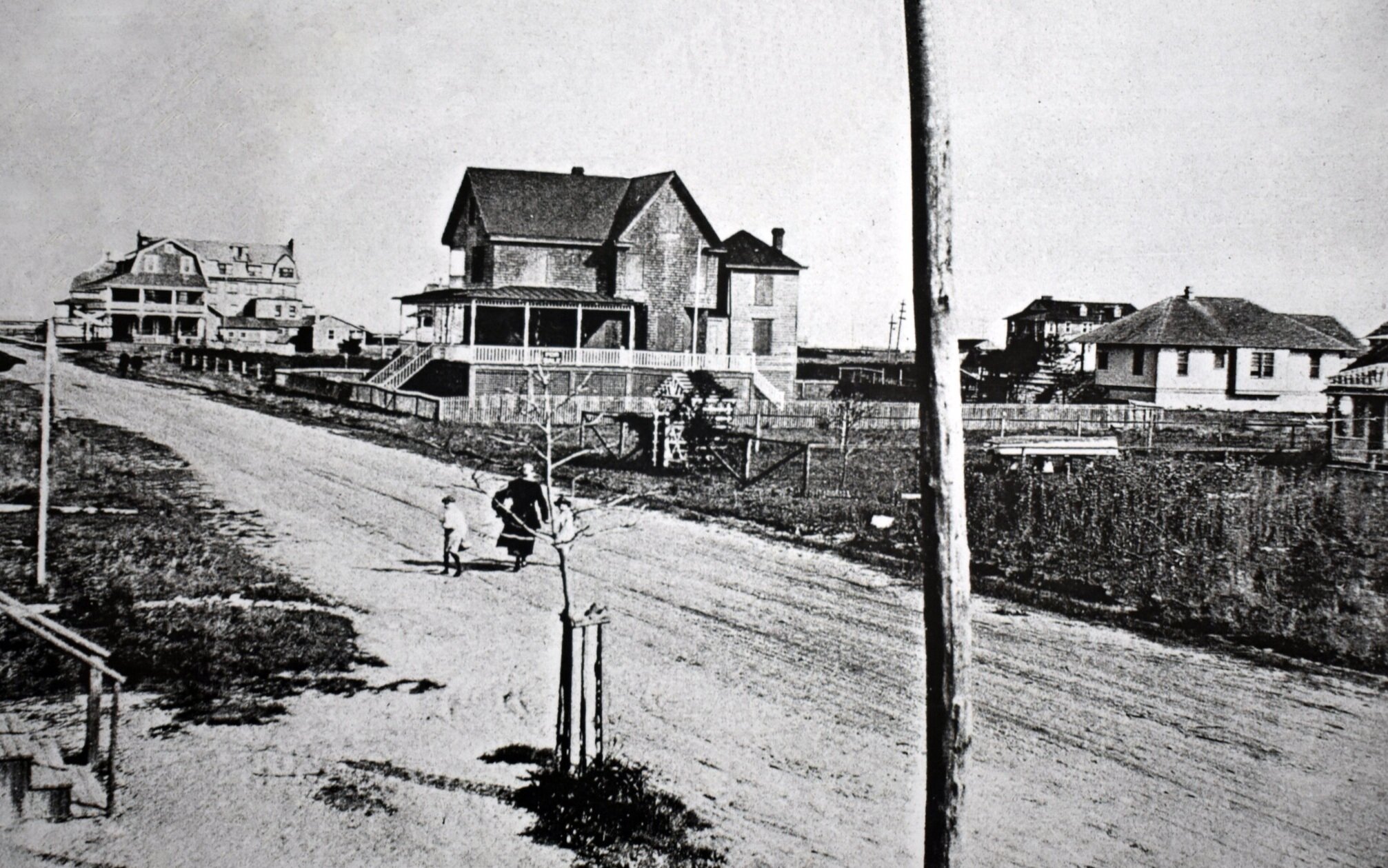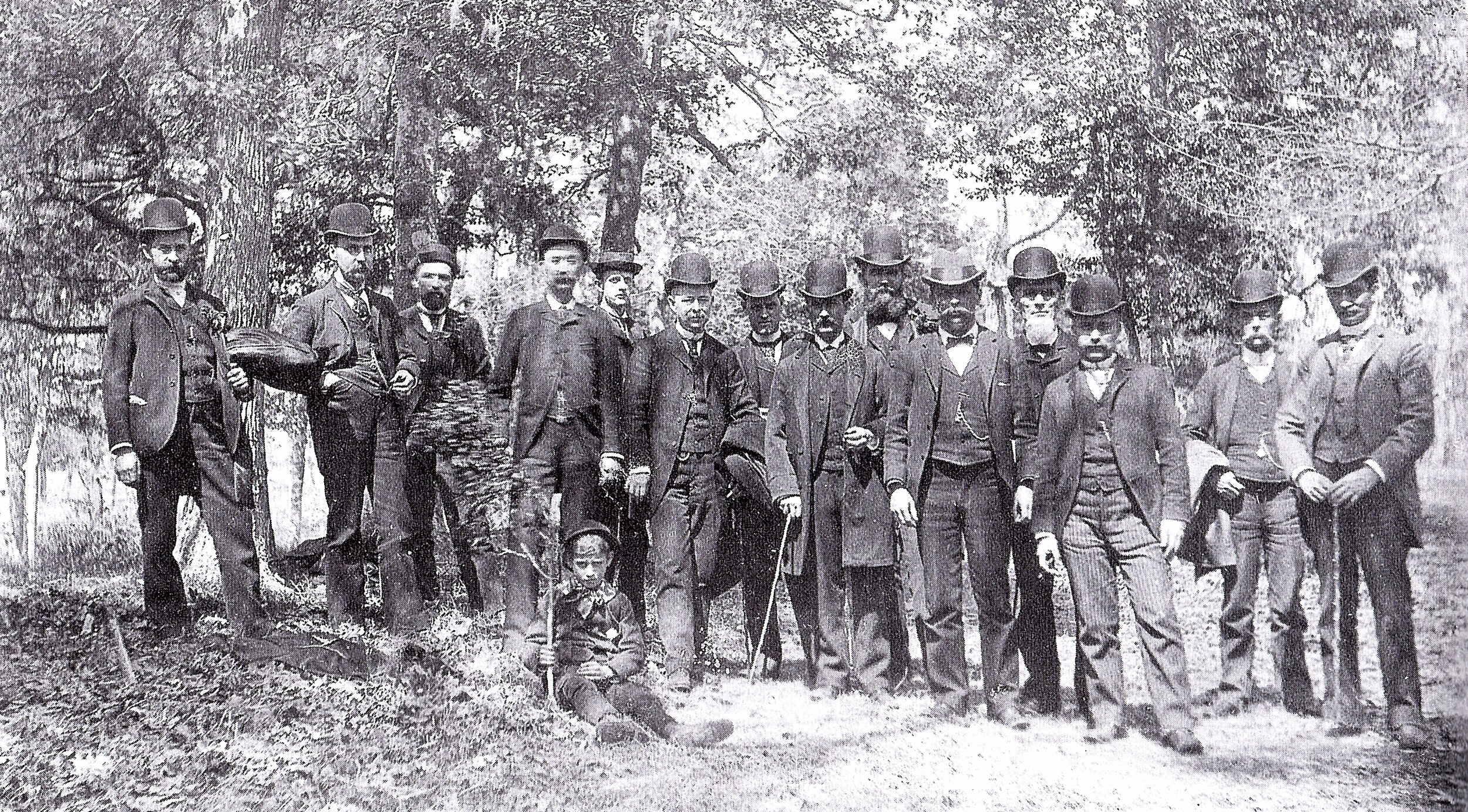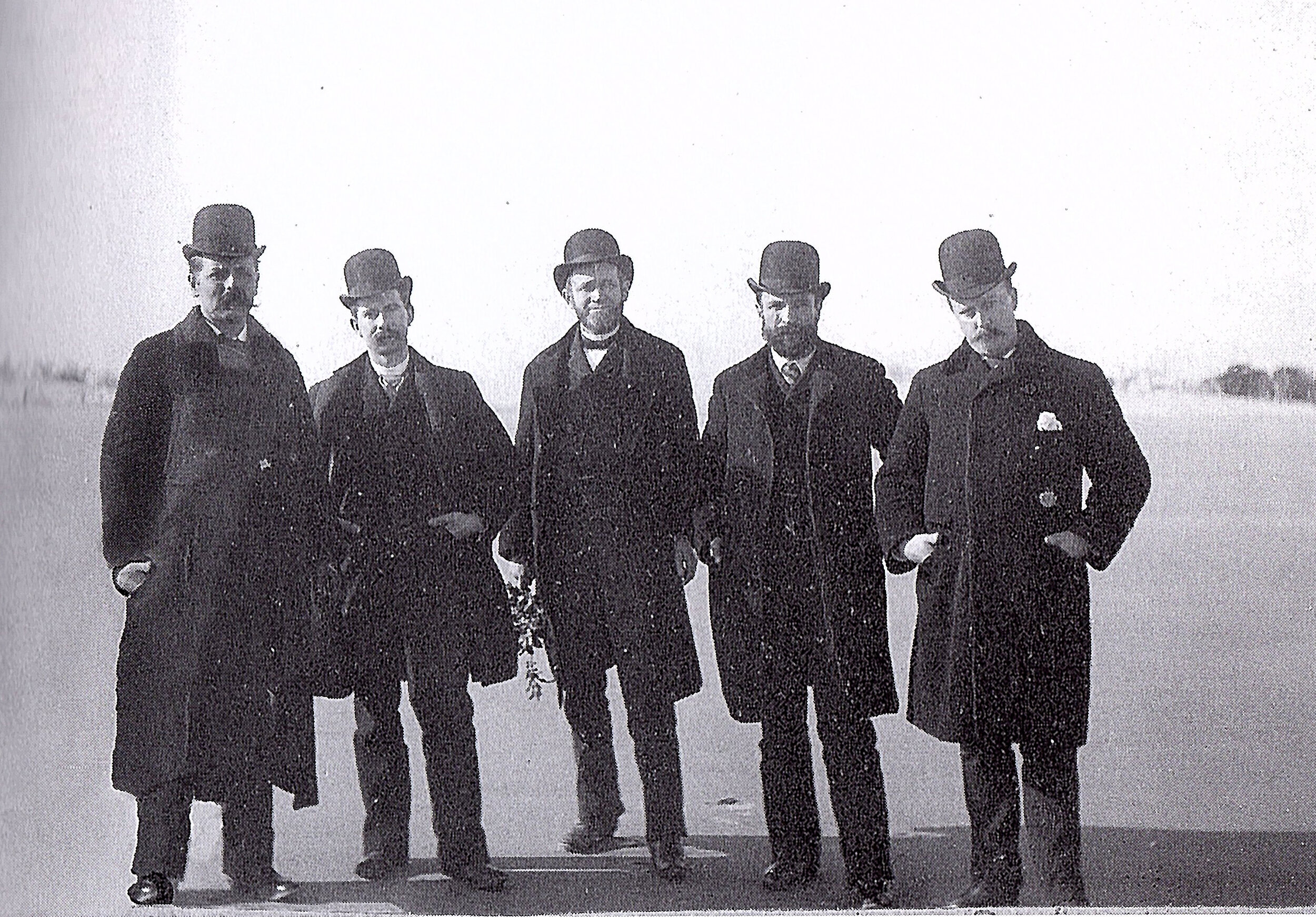By George, He Did It! The 19th Century Developer Who Transformed Seven Mile Beach
Rummel’s Store and Post Office
It’s July 27, 1892, and it’s steaming hot in Philadelphia. You pick up the latest issue of the Inquirer, and an advertisement catches your eye. It reads:
“Avalon, the gem of the Jersey Coast, the best beach in the world. Groves of heavy timber, miles of pleasant walks and drives. A climate unsurpassed. Lots for sale; cottages for sale or rent; prices low, terms reasonable.”
As you wipe the sweat from your brow, you think this sounds pretty nice. Wouldn’t it be great to own a little cottage down at the seashore, and feel the cool ocean breeze instead of suffering in the withering heat and humidity of the city? You see a name and address at the bottom of the advertisement – George J. Rummel, 140 South Third Street, Philadelphia – and decide to pay him a visit.
That scenario is how people in Philadelphia and its environs came to either buy or rent real estate in the fledgling borough of Avalon back at the turn of the century, thanks to the selling savvy of George J. Rummel. And if Rummel were alive today, he would no doubt be the star of TV infomercials, as he was well-known as an entrepreneur and salesman in Philadelphia before he set his sights on Avalon’s undeveloped shoreline, and its potential for him to make some money.
By the time he was through, Rummel had made quite a name for himself on Seven Mile Beach, too, not only as the president of the Avalon Beach Improvement Company (ABICO) – which he formed in 1888 to clear trees, level dunes, lay out and pave streets, all in an effort to sell lots and cottages – but also the Avalon City Building and Loan Association in 1889, to finance such projects, and a boating and fishing club, as well.
He expanded his roving eye for real estate to Stone Harbor a few years later, gaining a vested interest in the Stone Harbor Improvement Company, which operated much like ABICO. If anyone had a clear vision of Seven Mile Beach’s future, and an even clearer vision of how to fill his pocketbook, it was Rummel.
Upon his arrival in Avalon via the newly opened rail transportation system in 1888, the 45-year-old Rummel found a real estate developer’s delight: about seven miles of pristine beachfront and untouched, wooded land. With several associates, he formed ABICO and then negotiated with Joseph Wells to buy a part of the island, totaling 640 acres and 3,360 lots, but excluding the beachfront, for $75,000.
The Cape May Wave of Dec. 13, 1888 noted that the lots were being sold for the “most reasonable prices” from $100 to $600, depending on the location, and had been graded by ABICO.
Unfortunately for Rummel and his pals, storms in late 1888 and early 1889 knocked out the railroad bridge that would carry prospective buyers to the island, stalling sales for a while, but it was soon rebuilt in time for the late-spring tire-kickers. ABICO became busy that year not only constructing cottages but also a hotel on the beach between 33rd and 34th streets (later christened The Peermont), a boating and gunning club near the inlet, a railroad station, and a covered pier.
By May 1889, the Cape May Wave reported that real estate sales were “booming” in Avalon, with thousands of dollars of property sold, including two large cottages for $4,000 each.
“Mr. Rummel, the president of the Avalon Beach Improvement Company, is a hustler and a bustler, not stopping for any Northers or any other kinds of gales, or sand storms,” the Wave noted. “He is pushing forward at high speed. He is constantly having new streets laid out and lots graded, and everything fixed up as it should be. He sold $2,000 worth of lots in one day last week.”






Another Avalon hotel that Rummel built was the Hotel Leaming, which was constructed in 1891. After the Hotel Leaming was sold to John and Ellen Schnabel, it burned down in 1900. Fire also claimed Rummel’s summer residence, according to the Ocean City Sentinel of Jan. 4, 1894. He had arrived that evening from Philadelphia and started a fire in his heater, then left to spend time in the Avalon Hotel.
“On returning in a few hours, he found his cottage in flames,” the newspaper reported. “The fire spread to the adjoining house, destroying both. The loss is about $10,000, covered by insurance.”
The Peermont met a similar fate, burning to the ground in February 1896.
What spurred Rummel’s departure to Stone Harbor is unclear, but what is known is that he had severed ties with ABICO and late in 1894 signed an agreement with Charles Abbott of the Stone Harbor Improvement Company to be the general superintendent of operations and the sole agent for the sale of lots in that growing borough.
Rummel was given a block of lots to sell in Stone Harbor east of First Avenue between 82nd and 83rd streets, and he soon placed advertisements in the Inquirer, much like he did when he was developing Avalon. This ad appeared in the issue of Sept. 22, 1895:
“Stone Harbor, NJ: 7 Mile Beach, specially adapted for church and Sunday School excursions and temperance organizations. New excursion house just erected.
“An ideal spot for recreation. Safe to take your wife and children. Finest fishing on the coast. Superb ocean beach for bathing or driving; quiet waters in the rear for sailing.
“Bound to grow rapidly. Large lots at small prices. High ground untouched by tide water. Take West Jersey railroad direct or address GJR, agent, SH or 1026 Filbert St, third floor.”
And the following year, both Stone Harbor and Avalon were mentioned in Rummel’s ads, this one from the Inquirer of April 19, 1896:
“Avalon – Seven Mile Beach for Sale. 50 Bath houses, the only ones at the place. 110 x 110, also lots of tracts of land for sale at Avalon, Peermont and Stone Harbor. George J. Rummel, agent. 1028 Filbert Street.”
Rummel obviously liked to keep busy. In addition to selling lots and entertaining prospective purchasers, he served as Stone Harbor’s third postmaster, with the post office based in his general store on 83rd Street until 1910.
In 1913, Rummel celebrated his 70th birthday and marked the occasion with a gathering of his entire family. Despite his advanced age, he was still active around town, even having run for Stone Harbor assessor without success in 1914. According to information from the Cape May Library, Rummel died on April 4, 1923, at age 80, but little else is known about his later years.
Nevertheless, George J. Rummel wielded enormous influence in the early years of Seven Mile Beach, having been instrumental in transforming both Avalon and Stone Harbor from wild dunes into the thriving beach towns they are today.

